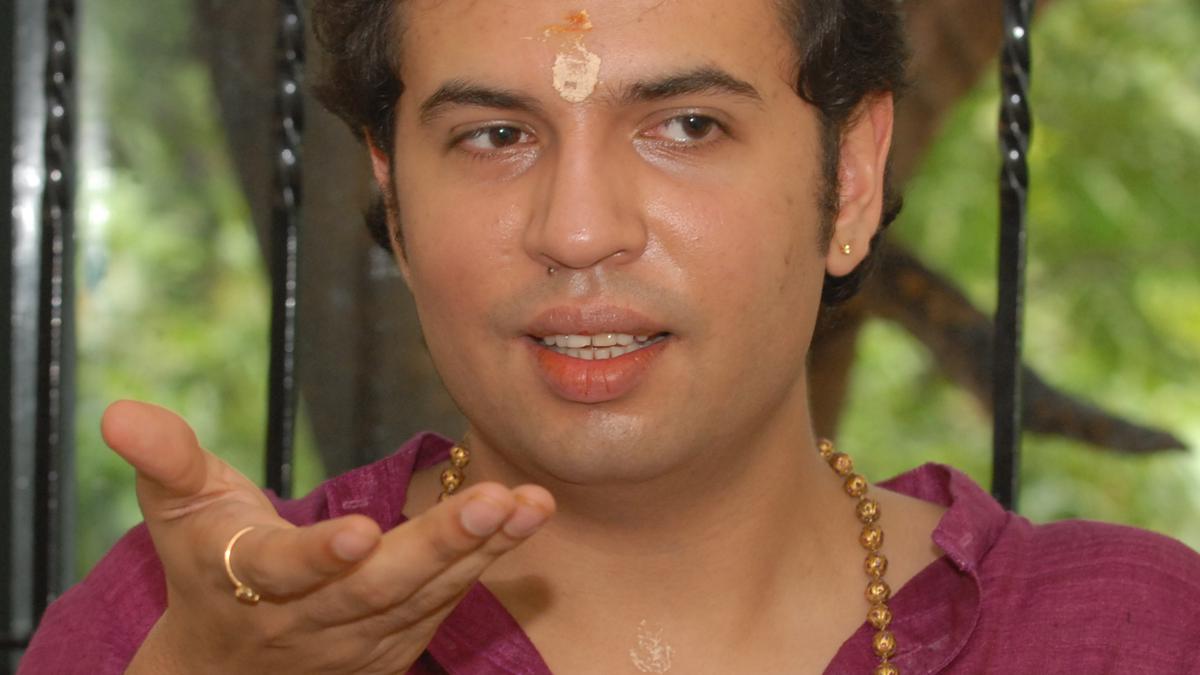
Aniruddha Knight talks about his efforts to preserve Balasaraswati’s legacy
The Hindu
Dancer Aniruddha Knight talks about his efforts to preserve his grandmother Balasaraswati’s legacy
This is the story of a lineage spanning nine generations, replete with dance and music, culture and customs, trials and tribulations. The torchbearer of this line, Aniruddha Knight, grandson of the illustrious Balasaraswati, narrates the story.
Pappammal, who lived in the mid-18th century, was an esteemed dancer, part of the Thanjavur court of yore. That she was not a fictitious character is evident from the records of taxes that she had paid the British government. Her daughter Rukmini was a musician in the same court as was her grand-daughter Thanjavur Kamakshi, who was a well-known dancer as well.
There seems to have been a continuous entwining of the lineage of this family with that of the Thanjavur Quartet. Thus, it was that Thanjavur Kamakshi came to the Travancore court, famed for its patronage of the arts, along with Sivananda and Vadivelu. The patronage of the royal courts must have surely been based on the credentials of these gifted women — Kamakshi was a disciple of Subbaraya Sastri, son of Syama Sastri of the Trinity of Carnatic music, and her daughter Sundarammal was a disciple of Annaswami Sastri, his grandson. Into this enriched ancestry came Veena Dhanammal, who was also reportedly taught by the direct descendants of Dikshitar’s parampara.
Continuing the legacy were her four daughters, one of whom was Jayammal, Balasaraswati’s mother. Aniruddha’s mother, Lakshmi, was Balamma’s only daughter. “She used to recollect how Balamma enjoyed watching me move to her music and nattuvangam, accompanied by her brothers, T Ranganathan on the mridangam and T Viswanathan on the flute,” says Aniruddha.
Edited excerpts from an interview.
What was the kind of training that your grandmother underwent to mould her into the legend she became?
Kandappa Nattuvanar, a great-grandson of Ponnayya of the Tanjore Quartet, was her guru. Her style of dancing bore the influence of his tutelage, which was meticulous. One had to master 150 adavus, only after which the student could move on to abhinaya. Insisting on perfection, he demanded six hours of intense training every day. He was so strict that after a point only Balamma was left as his student! My mother says that she noticed the scars from the caning on her legs after my grandmother died! Balamma was well trained in music and she was a scholar in Telugu, Sanskrit and Tamil, all of which enhanced her art, making it holistic. Apart from all this was her resilient nature that surmounted personal challenges and illnesses such as rheumatic fever and cancer. She was on a no-salt, no-sugar diet almost her entire life!













